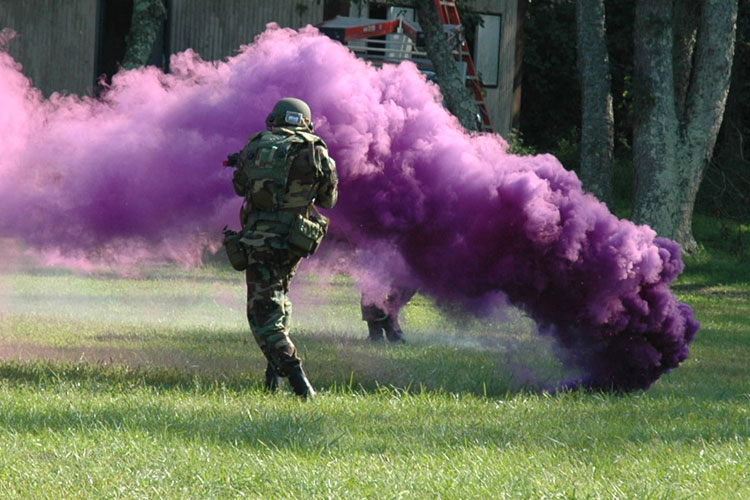Pyrotechnics include many devices to launch, detonate, or initiate an explosive material.
A pyrotechnic composition is a substance or mixture of substances designed to produce an effect by heat, light, sound, gas/smoke or a combination of these, as a result of non-detonative self-sustaining exothermic chemical reactions. Pyrotechnic substances do not rely on oxygen from external sources to sustain the reaction.
Pyrotechnics include many devices to launch, detonate, or initiate an explosive material.
Pyrotechnic Powders are Combustible and is an Explosion Hazard:
When most people think of controlling dust in the workplace, they think of taking steps to avoid inhaling dusts to prevent health problems. However, the accumulation of combustible dusts in the workplace can lead to far greater consequences. As seen in recent years, neglect of housekeeping and improper handling of combustible dusts can lead to property damage, injuries and loss of life.
Some pyrotechnic compositions are used in industry and aerospace for generation of large volumes of gas in gas generators (e.g. in airbags), in pyrotechnic fasteners, and in other similar applications. They are also used in military pyrotechnics, when production of large amount of noise, light, or infrared radiation is required; e.g. missile decoy flares, flash powders, and stun grenades. A new class of reactive material compositions is now under investigation by military.
Many pyrotechnic compositions – especially involving aluminium and perchlorates – are often highly sensitive to friction, impact, and static electricity. Even as little as 0.1–10 millijoules spark can set off certain mixtures.
Pyrotechnic compositions are usually homogenized mixtures of small particles of fuels and oxidizers. The particles can be grains or flakes. Generally, the higher the surface area of the particles, the higher the reaction rate and burning speed. For some purposes, binders are used to turn the powder into a solid material.
The National Fire Protection Association (NFPA) defines a combustible dust as “a combustible particulate solid that presents a fire or deflagration hazard when suspended in air or some other oxidizing medium over a range of concentrations, regardless of particle size or shape.”
In general, combustible particulates having an effective diameter of 420 μm or smaller, as determined by passing through a U.S. No. 40 Standard Sieve, are generally considered to be combustible dusts. However, agglomerates of combustible materials that have lengths that are large compared to their diameter (and will not usually pass through a 420 μm sieve) can still pose a deflagration hazard. Therefore, any particle that has a surface area to volume ratio greater than that of a 420 μm diameter sphere should also be considered a combustible dust. The vast majority of natural and synthetic organic materials, as well as some metals, can form combustible dust. The NFPA’s Industrial Fire Hazards Handbook states, “any industrial process that reduces a combustible material and some normally non-combustible materials to a finely divided state presents a potential for a serious fire or explosion.”
Suggested Industrial Vacuums for Recovery of Toxic & Combustible Dust
PrestiVac HEPAPlus* Vacuums are specifically designed to safely vacuum toxic dusts. Equipped with a Certified Absolute HEPAPlus*filter with an efficiency of 99.995% on 0.2 micron so there is no risk of exposure or contamination for the operator or the environment. These vacuums are tested for absolute filtration. Testing Method: IEST RP-CC034.3. H14. MIL-STD 282 / A.S.T.M. - D2986-91. MPPS method EN 1822.
PrestiVac Explosion Proof/Dust Ignition Protected Vacuums are designed to safely vacuum explosive, flammable, combustible conductive* dusts. Our Explosion Proof/Dust Ignition Protected Vacuums are completely grounded and static dissipating because they are built entirely with non-sparking metals and do not have any painted components so there is no risk of fire or explosion from a spark or static build up. All the electrical components, including the motor and starter are totally enclosed so there is no source of ignition. Our Explosion Proof vacuums comply with NFPA 484 guidelines and are an effective tool for good housekeeping practise as per OSHA.
- Dust Ignition Protected Division 2 Vacuums
- Explosion Proof Division 1 Vacuums
- HEPA Vacuums
- Immersion Separator
Which Industries are at Risk with Pyrotechnics?













